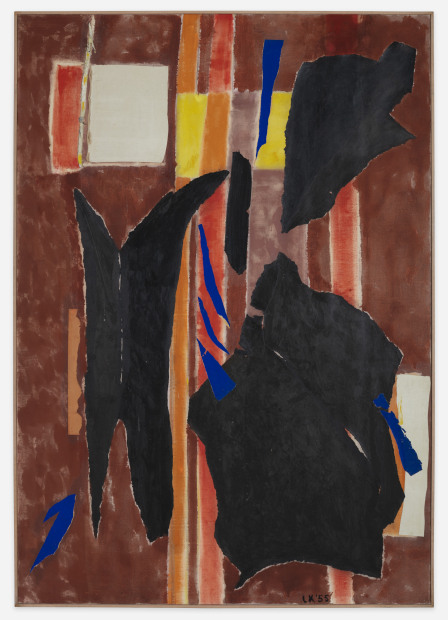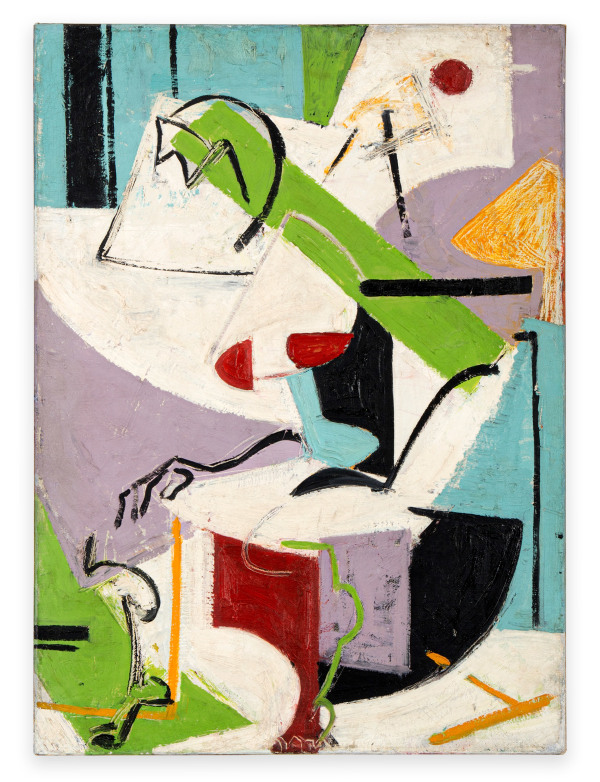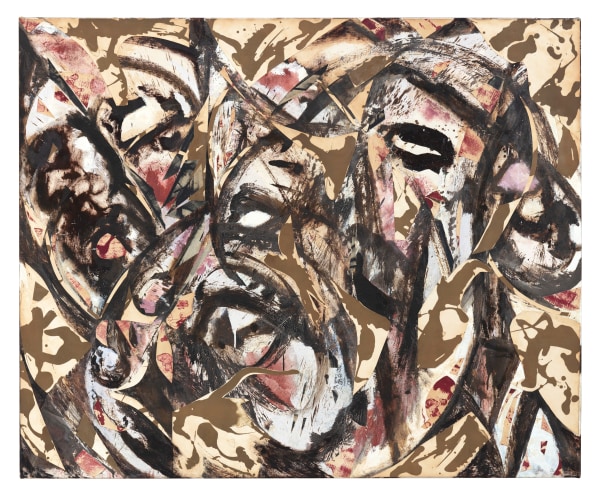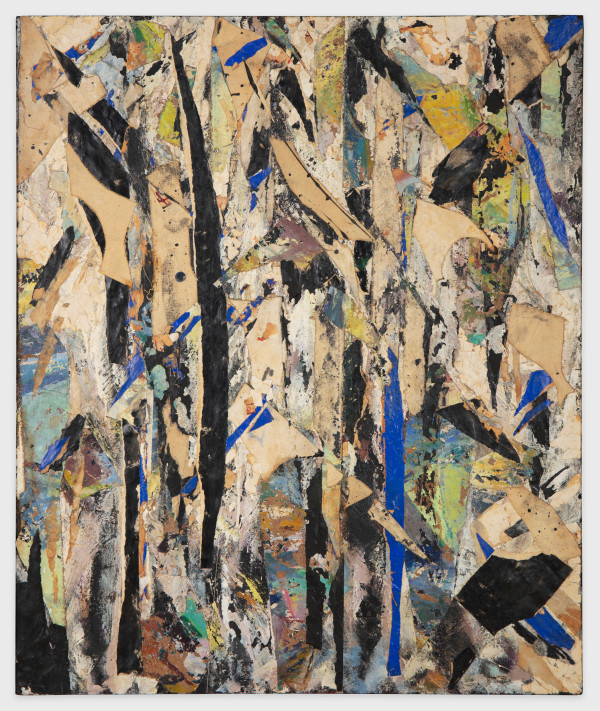Lee Krasner: Collage Paintings 1938–1981
Past exhibition
-
-
Lee Krasner: Collage Paintings 1938–1981 is presented in collaboration with the Pollock-Krasner Foundation, on view at 509 West 27th Street from March 11 through April 24, 2021, and accompanied by a fully-illustrated, hardcover catalogue. Featuring several masterpieces from the 1955 debut of Krasner’s collage paintings at the Stable Gallery, as well as significant works from the artist’s 2019–2021 traveling European retrospective, this exhibition provides American audiences with the opportunity to further examine one of Krasner’s most innovative practices.
-
Throughout her indelible career, Lee Krasner’s tireless and fierce self-examination compelled the artist to destroy previous works and reconstitute their elements into new compositions. This practice of reclaiming past works of her own, as well as those of her husband, Jackson Pollock, resulted in many of Krasner’s most novel bodies of work in which elements of painting, drawing, and collage coexist in dramatic compositions. Increasingly regarded as one of the most philosophical and unwavering pioneers of the Abstract Expressionist movement in America, Lee Krasner’s collage paintings represent some of the artist’s most conceptual and emotionally charged works.
-
-
Included in the exhibition are pivotal works from Lee Krasner Collages at the Stable Gallery, New York, in 1955, which Clement Greenberg would later proclaim as a “major addition to the American art scene of the era.”[1] Reviewing the exhibition, painter Fairfield Porter remarked, “When nature is photographed in detail, its orderliness appears: Krasner’s art, which seems to be about nature, instead of making the spectator aware of a grand design, makes [them] aware of a subtle disorder greater than [they] might otherwise have thought possible.”[2]Stretched Yellow (1955) and Blue Level (1955), which were shown in the Stable Gallery exhibition, are two of a concise group of five works created in the same year in the same imposing vertical scale; the latter of which was also featured in the artist’s recent traveling retrospective.
-
-
Following the recent close of Lee Krasner: Living Colour, the tour de force European retrospective curated by Eleanor Nairne of the Barbican Centre, London, which traveled to the Schirn Kunsthalle in Frankfurt, Germany; the Zentrum Paul Klee, Bern, Switzerland; and the Guggenheim Bilbao, Spain, a number of works from the exhibition will also be included in Lee Krasner: Collage Paintings 1938–1981 at Kasmin. With Bald Eagle (1955) Krasner masters the all-over composition and conjures the cut-outs of Henri Matisse, while remaining acutely self-referential in her bold amalgamation of unprimed canvas with parts of Jackson Pollock’s drawings from the 50s. Imperfect Indicative (1976) belongs to “Eleven Ways to Use the Words to See,” a striking series in which Krasner integrated early charcoal drawings that were realized under the tutelage of Hans Hofmann between 1937 and 1940.
-
-
Lee Krasner (1908–1984) is considered one of the most critical figures in the evolution of American art in the second half of the 20th century. Emerging from the first generation of Abstract Expressionist painters, Krasner committed to a six-decade persistent exploration of novel approaches to painting and collage. This is Kasmin’s third solo exhibition of the work of Lee Krasner, which the gallery has represented through the Pollock-Krasner Foundation since 2016. The Foundation, established in 1985, provides vital support to emerging and established artists nationally and internationally. For more information, visit www.pkf.org.
-
Works
-
About the Artist

-
Explore
-

vanessa german: GUMBALL—there is absolutely no space between body and soul
April 3 – May 10, 2025 509 West 27th Street, New York, 514 West 28th Street, New YorkKasmin presents its second solo exhibition of new work by artist vanessa german (b. 1976), which debuts related bodies of sculpture across two of the gallery’s spaces in New York. GUMBALL—there is absolutely no space between body and soul deepens german’s singular approach to sculpture as a spiritual practice with the power to transform lived experience. Both series comprise mineral crystals, beads, porcelain, wood, paint and the energy that these objects bring to life to form monumental heads and figures in the act of falling. Together, each body of work envisions the transformation of consciousness necessary to imagine a new world. -

Helena Foster: Time Honoured
April 3 – May 3, 2025 297 Tenth Avenue, New YorkThe first New York solo exhibition of London-based painter Helena Foster features new oil paintings on linen, paper, and vellum that express the artist’s lyrical approach to painting as an accumulation of cultural and generational wisdom. Foster draws freely from literature, theater, film, Igbo oral tradition, and religion, achieving a dreamlike aura of mystery in dynamic compositions ambiguously set between thick vegetation and the built environment.
-
























